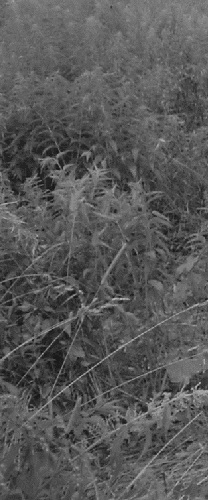New results in 2015
In 2015, the team of project was added by four new members. The commitments from the proposal for 2015 (to have 12 papers from the journals represented in the Web of Science Core Collection published) are exceeded, there are now 14 published and accepted papers in the WOS journals. But such publications still do not contain strong specialized genetic papers (what was planned, and what was specially underlined in the proposal for 2015!), their publication is planned in 2016.
Study of the phylogeny of Moina (Moinidae) revealed that each of "common" and "widely distributed" species of this genus in North Palaearctic (M. brachiata, M. macrocopa, M. lipini, M. mongolica) is represented by a series of independent biological species. We demonstrated a strong phylogenetic signal of COI gene in Moina. Ideas that M. macrocopa and M. brachiata groups are taxa of a subgeneric or generic rank (Hudec, 2010; Dumont et al., 2013) are found to be wrong. A phylogenetic study of Sida confirmed separation of its species according to Korovchinsky (1978). Based on original sequences of the gene COI, we created a haplotype network for Chydorus cf. sphaericus group (Chydoridae). Preliminary data could be regarded as an evidence of the colonization of European Russia by this group from Siberia; also populations from Bering Island appeared as a result of colonization from continental Kamchatka.
Numerous samples from Greenland, Iceland, Svalbard, Shokalsky Island (in Kara Sea, Russia) are studied and the species lists are composed for these territories. All works on Bering Island (Commander Islands) are finished, and a report paper is submitted to be published. A study of the Cladocera of Central Yakutia is finished, with new records for fauna of Yakutia, Eastern Siberia and Russia, two new species are described from this region. A significant portion of revealed taxa are endemics of East Eurasia. A remarkable trait of the local fauna is presence of some "American" taxa (described initially from North America), but determination of their exact status is a task of further studies i.e. using genetic methods. We preliminarily concluded that the fauna of Cladocera in Central Yakuia is represented by elements of different faunistic complexes: endemic East-Asian one (with prevalence of northern Easter-Siberian and Far East taxa), America-Eastern-Asian ("Beringian") one, and widely distributed pan-Eurasian one.
A taxonomic revision of Holrctic subgenus Eurycercus (Teretifrons) (family Eurycercidae)is finished, and a new species is described from Russian Arctic. This step is the last one in the revision of Eurycercus of the world fauna, it makes possible to publish a monograph on this family, which is proposed as a special task of this project in 2016, work on this manuscript is already started.
A revision of the genus Leberis (subfamily Aloninae, family Chydoridae) is finished. A revision of the pulchellа-group of the genus Alona s.lat. of the world fauna is finished, this group is transferred to the genus Ovalona. A revision of widely distributed genus Camptocercus (subfamily Aloninae, family Chydoridae) is continued. A revision of the gnus Acroperus of Old World is conducted, and a new genus is described from Africa. Results of all these works are published in Zootaxa. A morphological revision of the Pleuroxus trigonellus group (subfamily Chydorinae, family Chydoridae) is also finished.
A study of external morphology of the ephippium in recent representatives of Daphnia (Ctenodaphnia) from Northern Palaearctic is finished. Some characters useful for diagnosing species and species groups are revealed. It is found that Daphnia cf. atkinsoni, Daphnia cf. magna and Daphnia cf. similis were present in Beringia during Pleistocene. Recently they are absent in Beringian territories, and distributional ranges of D. magna and D. similis-exilis groups are disconnected, but we found that they formed a continuum in the past. Age of most young records of D. magna and D. similis in Beringian territories could be explained as a time of disconnection of their distribution ranges. Such data could be used for calibration of specific Daphnia molecular clocks. Ephippia of Daphnia are found in the hair and feces of the mammoth, special papers with such reports are sent to palaeoecological journals.
Our works on fossil and subfossil ephippia demonstrated the necessity of understanding of some peculiarities of their deposition in the bottom sediments in the water bodies of different types (in both permafrost and non-permafrost regions). A study of the cladoceran remains in upper deposits of small water bodies in the southern portion of European Russia is conducted, and the paper on this subject is submitted for publication.
As it was noted in the proposal for 2015, some preliminary general conclusions were made already in papers published in 2015. In our papers on Central Yakutia, the existence of "Beringian" faunistic complex was demonstrated. All possible literature on Arctic Region is analysed and lists of the Cladocera were accomplished for different regions (both for island and the continental posrtions). Similar biogeographical patterns were revealed in several large genera of the Aloninae (Chydoridae): Anthalona, Ovalona, Leydigia, Coronatella, Camptocercus: a number of local endemics among basal groups and few advanced taxa with very wide distribution ranges and dominated in the water bodies of eastern and western which are more closer related to each other than to local endemics. Such patterns in different Alonines are evidences of their antiquity. A important result of our work in 2015 is a conclusion on mass extinction of the ctenodaphnias in Beringia, probably at Pleistocene/Holocene boundary. Explanation of such fact is a task for future studies. Quite probably that "Beringian extinction" took place in other groups of the Cladocera with disconnected recent range, and even in another freshwater animals.



